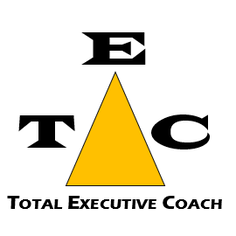Leadership Solutions Blog
|
|
10/29/2021 0 Comments October 29th, 2021LEADERSHIP SOLUTIONS
With every post you read on my blog...
Donna Coles, author of this blog, invites you to schedule a no-cost Consultation to discuss your leadership development needs. Click here to schedule your confidential Consultation. © 2018 CoachingWithDonnaColes.com All Rights Reserved
0 Comments
11/3/2020 0 Comments 10 Sources of Workplace Conflict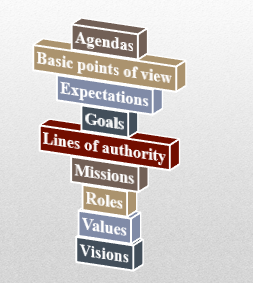 Here is a list of just some of the more compelling sources of workplace conflict. As you begin to address disruption in your workplace, use this list to help sort out conflicts.
Portions of this article are excerpts from my book “Lead or Someone Else Will: A Coach’s Guide to Leadership”. It can be found on Amazon.com. Would you like more information about this topic? Or how about a brief, confidential, no-judgement discussion of your current situation? Contact my offices at (336) 999-4533 or email me at DonnaColes.Coach@gmail.com and we’ll schedule a time to discuss your leadership dilemma and identify some options that will help. Or, Click the following link to schedule your discussion with me. https://app.acuityscheduling.com/schedule.php?owner=18102228 Until then…  Day-to-day, our self-motivation contributes to our self-preservation and self-development. When faced with environmental demands, it’s wise to keep our self-motivation strong in order to persevere. Maintaining self-motivation can be difficult. Insufficiency during times of prolonged stress prompts many people to have difficulty making important lifestyle and work-life adjustments. They may find energy and momentum elusive. Living with ongoing stressful situations and wading through a daily barrage of information can lead to feeling helpless or at a loss for how to make life better. On the other hand, adequate self-motivation can prompt us to accomplish more. It can inexplicably drive us to start one more project or complete one more task. It’s the energy from within that helps us become more energized and productive. Is focusing on your self-motivation worth the energy? I’d say yes! 10 Ways to Help Keep Self-Motivation Strong
Apply these tips to help you self-motivate. Share this information with others. Don’t settle for mediocrity. Let your self-motivation take you to your levels of excellence. Portions of this article are excerpts from my book “Lead or Someone Else Will: A Coach’s Guide to Leadership”. It can be found on Amazon.com. Would you like more information about this topic? Or how about a brief, confidential, no-judgement discussion of your current situation? Contact my offices at (336) 999-4533 or email me at DonnaColes.Coach@gmail.com and we’ll schedule a time to discuss your leadership dilemma and identify some options that will help. Or, Click the following link to schedule your discussion with me. https://app.acuityscheduling.com/schedule.php?owner=18102228 Until then… 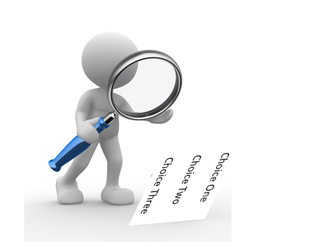 Prior to implementation, what helps to determine whether the leader’s choice is likely the best choice? My description of a leadership choice that’s likely the right choice:
The success of the leader’s choice will undoubtedly be measured by the depth and breadth of positive shift within the organization. Proficiency in decision-making provides the leader with opportunities to choose the very best path to problem resolution. And practicing proper decision-making will provide the leader with greater self-confidence and reduce the likelihood of decision-making blunders and delays. Portions of this article are excerpts from my book “Lead or Someone Else Will: A Coach’s Guide to Leadership”. It can be found on Amazon.com. Would you like more information about this topic? Or how about a brief, confidential, no-judgement discussion of your current situation? Contact my offices at (336) 999-4533 or email me at DonnaColes.Coach@gmail.com and we’ll schedule a time to discuss your leadership dilemma and identify some options that will help. Or, Click the following link to schedule your discussion with me. https://app.acuityscheduling.com/schedule.php?owner=18102228 Until then… 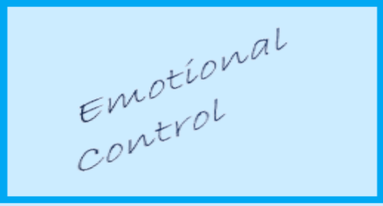 Healthy emotional control occurs when we self-monitor our emotions and make adjustments when faced with environmental triggers. Our emotional adjustments are made for our benefit and for the benefit of others. Healthy emotional control requires each of us to monitor the emotional responses of others and to humbly self-adjust to achieve positive outcomes. We, in effect, respect others’ emotions – even when they seem over-the-top. Healthy emotional control is also our drive to discriminate among our emotions as we experience them. For example, we discriminate our agitation from our emotional fatigue. Or discriminate emotional frustration from the emotions that accompany physical hunger because we skipped lunch that day. To avoid allowing our emotional reactions to get the best of us, we should work to acknowledge them, name them, control them, and evaluate their strength to avoid allowing environmental triggers to send US over-the-top. Here are eight signs that you have healthy emotional control. Perhaps use this list to celebrate your strengths and to identify areas in need of development.
Portions of this article are excerpts from my book “Lead or Someone Else Will: A Coach’s Guide to Leadership”. It can be found on Amazon.com. Would you like more information about this topic? Or how about a brief, confidential, no-judgement discussion of your current situation? Contact my offices at (336) 999-4533 or email me at DonnaColes.Coach@gmail.com and we’ll schedule a time to discuss your dilemma and identify some options that will help. Or, Click the following link to schedule your discussion with me. https://app.acuityscheduling.com/schedule.php?owner=18102228 Until then…  Any division, department, or work group comprised of long-tenured employees will have a history of operating informally. This informality may include unwritten practices that may be overlooked during the formal and informal onboarding processes. Off the radar, these unwritten practices may have survived through time and legitimately afforded time-saving and effort-saving opportunities. But because they are informal, newly hired remote workers may be unaware of their existence – leaving your remote workers at a disadvantage. To manage the unwritten practices means to enter them into formal policies and procedures, or terminating them to make way for equitable opportunities for success. The result will build employee satisfaction and trust. But, on the other hand, reining in the informal practices to embrace formal policies and procedures challenges the historical reliance on supportive relationships. Recommendations Consider the following to continue your organization’s efforts to reduce remote worker isolation.
Your leadership team must be willing to reinvent the organization so that unwritten practices don’t erode newly-hired employee’s trust. Yours will become an even greater remote employee friendly organization. Would you like more information about this topic? Or how about a brief, confidential, no-judgement discussion of your current situation? Contact my offices at (336) 999-4533 or email me at DonnaColes.Coach@gmail.com and we’ll schedule a time to discuss your leadership dilemma and identify some options that will help. Or, Click the following link to schedule your discussion with me. https://app.acuityscheduling.com/schedule.php?owner=18102228 Until then…  I believe there are two leadership skills to rely on during crises and change:
Vision board. Vision work. Vision statement. Vision coaching. Know that somewhere within you there’s a vision for your organization and for you. And that your well-constructed visions are greater than your current ability to see – especially when crises and change prompt you to lose focus. Clarity Even in the throes of crisis and change, growth is available. Constructing a clear vision means considering the areas that are important for sustainability and legacy. This also includes setting achievable long-term and short-term goals in those important areas, and conscientiously maintaining the motivation to accomplish them. Don’t grow stale while waiting for critical situations to abate. Remain dynamic, forward thinking, and optimistic for the future. Envision
The Steps M.W. Johnson and J. Suskewicz, Harvard Business Review, April 17, 2020, suggest steps to visioning for a post-crisis future. I’ve modified those steps.
Would you like more information about this topic? Or how about a brief, confidential, no-judgement discussion of your current situation? Contact my offices at (336) 999-4533 or email me at DonnaColes.Coach@gmail.com and we’ll schedule a time to discuss your leadership dilemma and identify some options that will help. Or, Click the following link to schedule your discussion with me. https://app.acuityscheduling.com/schedule.php?owner=18102228 Until then…  Our level of leadership success is partly measured by our capacity to positively influence the direction and the outcomes of our respective groups. Each of us has multiple opportunities to formally and informally accept a leadership role -- on the job, in our communities, in our extended families, and in our homes. Even parenting is a form of leadership. It certainly helps when we are prepared to take on the responsibilities that come with leading. When we are new to leadership, we’ll likely have greater success with those responsibilities when we have the support of a great mentor. In the absence of the guidance of a mentor, we may exert an unnecessary show of coercion or we may be overly diplomatic and not “rock the boat”. To help us through the growing pains that come with the leadership role, my opinion is that every leader needs at least one mentor. Association for Talent Development (ATD) research (2019) found that 75% of successful CEOs had strong mentors. More than just guide, a mentor will challenge you, support you, and teach. A strong mentor will help shape your leadership Brand. Of course, your Brand is what you’re known for, your reputation. And your Brand determines your legacy – what you will forever represent. Make your mentor an important tool in your toolkit. Would you like more information about this topic? Or how about a brief, confidential, no-judgement discussion of your current situation? Contact my offices at (336) 999-4533 or email me at DonnaColes.Coach@gmail.com and we’ll schedule a time to discuss your leadership dilemma and identify some options that will help. Or, Click the following link to schedule your discussion with me. https://app.acuityscheduling.com/schedule.php?owner=18102228 Until then…  Yes, absolutely! When leadership wants to play it safe and subtly (or not so subtly) communicates fears of failure or criticism, those fears will begin to stifle employees’ freedom to think creatively and share new ideas. Members of your employee group are keenly aware of signs that you want to play it safe. And they’ll do what they can to avoid triggering your suppression of forward thinking. Here are eight sure-fire ways to stifle your employees’ creativity and enthusiasm:
On the other hand, the keys to supporting employee creativity are to hire the right people, provide the right supports, and allow your employees the freedom to commit to excellence. Here’s what I think is a great quote about creativity. “Creativity is more than just being different. Anybody can plan weirdness. That’s easy. What’s hard is to keep it simple. Making complexity awesomely simple, that’s creativity”. – modified from Charles Mingus Would you like more information about this topic? Or how about a brief, confidential, no-judgement discussion of your current situation? Contact my offices at (336) 999-4533 or email me at DonnaColes.Coach@gmail.com and we’ll schedule a time to discuss your leadership dilemma and identify some options that will help. Or, Click the following link to schedule your discussion with me. https://app.acuityscheduling.com/schedule.php?owner=18102228 Until then… 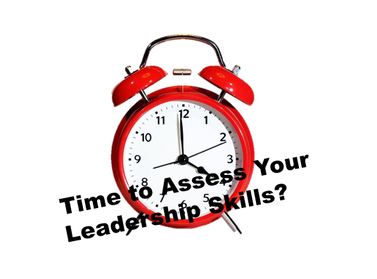 One of the first steps of Leadership Coaching is to take the time to mutually understand concerns about the client’s leadership competence. The goal is to fully recognize the client’s current difficulties – whether they are self-identified or pointed out by a colleague. Impressions of the client’s competence, no matter the source, are “put on the table” and reviewed at the client’s pace. The second step is a global self-assessment of how the client thinks the client is doing as a leader. To give you a head start, I’ve included the list of key leadership competencies that I use. See the Attachment below. Of course, there’s a space for “Other” because the leadership role is ever evolving given the environment. Portions of this article are excerpts from my book “Lead or Someone Else Will: A Coach’s Guide to Leadership”. It can be found on Amazon.com. Entries on this list were gathered over time from multiple sources. I invite you to take the self-assessment and give my offices a call if you would like to enhance your leadership competency. Would you like more information about this topic? Or how about a brief, confidential, no-judgement discussion of your current situation? Contact my offices at (336) 999-4533 or email me at DonnaColes.Coach@gmail.com and we’ll schedule a time to discuss your leadership concerns and identify some options that will help. Or, Click the following link to schedule your discussion with me. https://app.acuityscheduling.com/schedule.php?owner=18102228 Until then…
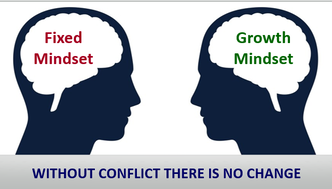 A primary leadership responsibility is to spearhead initiatives that both sustain and grow the organization. While we may become leaders for the opportunity to promote growth, we may not have considered two important truths; that innovation and forward movement are initially powered by a). the energy of incompatible ideas and b). the resolution of conflict. Certainly, when well-managed, airing conflicting ideas is good for any organization’s development. Conflict encourages dialogue and tests each individual’s perceptions. The examination of passionately held beliefs helps organizations avoid groupthink. Without some level of conflict, apathy within an organization will kill innovation and ultimately, the organization. As long as your organization values innovation, conflicts will likely occur during the initial stages of change. And based upon how leadership manages each conflict as it arises, it will either enhance or undermine the vitality of your organization and its standing in the professional community. Keep in mind that many professionals choose not to seek employment in organizations fraught with conflict. Aside from the necessity to learn and practice good conflict management skills, leaders should also know and use skills to support positive conflict. Here are some suggestions. How to Support Positive Conflict
Would you like more information about this topic? Or how about a brief, confidential, no-judgement discussion of your current situation? Contact my offices at (336) 999-4533 or email me at DonnaColes.Coach@gmail.com and we’ll schedule a time to discuss your leadership dilemma and identify some options that will help. Or, Click the following link to schedule your discussion with me. https://app.acuityscheduling.com/schedule.php?owner=18102228 Until then… Team coaching – as opposed to employee training or individual coaching -- significantly improves team performance with initiatives focused on skills-building, intra-team accountabilities, and team-based confrontation of insufficient commitments to team goals.
To determine if your team could benefit from team coaching, consider these four instances when team coaching is recommended and the abbreviated suggestion of how team coaching would proceed. Perhaps they’ll look familiar.
And, lastly, here are some suggested evidences of successful team coaching:
As a certified team coach, I collaborate with teams, team leaders, managers, and human resources professionals to develop and implement strategies that improve team performance. If you’d like a cost- and time-efficient way to provide coaching to several individuals on a team, team coaching may be your answer. Would you like more information about this topic? Or, if you’d like a brief, confidential, no-judgement discussion of your current situation? Contact my offices at (336) 999-4533 or email me at DonnaColes.Coach@gmail.com and we’ll schedule a time to discuss your leadership dilemma and identify some options that will help. Or, Click the following link to schedule your discussion with me. https://app.acuityscheduling.com/schedule.php?owner=18102228 Until then… 10/3/2020 0 Comments Planning Your Q-and-A Session As your organization prepares for change, consider conducting Question and Answer Sessions. Your Q and A sessions will help you measure your organization’s climate, gather information useful in planning, and identify influential voices of both agreement and dissent. This article takes you through planning a Q and A session and perhaps allay some of the anxiety that accompanies them. Prepare for Questions You’ll want to prepare your responses to both supportive and dissenting comments; and responses to unanticipated viewpoints. Preparation will help you overcome your defensiveness and awaken your curiosity about other points of view. Prepare to seek information and clarifications; and allow dissenting points of view to contribute to your knowledge-base, continued planning, timely implementation, and avoidance of potential obstacles. Prepare to Receive, Plan, and Respond Just as an MLB pitcher in the bullpen makes catching and pitching look easy, with practice, you’ll also seem to receive and respond with ease. You’ll receive each question or comment, plan your feedback, and respond. The structure described below allows time to prepare your thoughtful responses. Receiving Dissent During your Q and A session, ask specifically for dissent if it is not readily offered. But, understand that no matter how extensive and rational your message, some recipients may not agree that the problem you intend to solve is worth solving. They may lobby for more pressing issues. There may be outliers you’ll attempt to convince that a problem exists to help assure that they will agree to participate in a solution. Provide the data and the bottom-line value of what you propose to do, and include the necessity for everyone involved to participate fully in the effort. Use a Note-taker to Organize All Comments and Questions During the session, your note-taker will visually organize participants’ questions, comments, and suggestions. The group’s offerings will be topically clustered. Only after all information from the group is collected, you’ll prepare your thoughts and provide your organized and cohesive responses. This method is a time saver. You’ll avoid being overwhelmed by the volume of comments. And because you’ll undoubtedly be asked the same question more than once, you’ll present organized responses. Your Q and A Session Begins Introduce the purpose of the session and request input associated with the proposed change. Your note-taker will record the group’s ideas using a method that allows participants to view the note-taking as it occurs. You’ll confirm your understanding of the key point of each comment. Your note-taker will topically cluster all ideas as they are presented. After all ideas are presented, you’ll address the group’s issues with organized clusters of responses. Respond to Divergent Ideas In terms of your response to divergent views, listen to the emotional tenor of the group, and provide reassurances to those not in agreement with the proposed change. Inquire regarding their trepidation. Remain calm. Be sure to thank the group for their participation in the Q and A process. Plan Next Steps Lastly, after addressing all of the group’s comments, make commitments to keep employees abreast of the organization’s progress. Assure the group that follow-up will occur that includes timely, open, and honest communication that takes into account, as much as possible, the group’s recommendations and concerns. Portions of this article are excerpts from my book “Lead or Someone Else Will: A Coach’s Guide to Leadership”. It can be found on Amazon.com. Would you like more information about leadership communication strategies? Let’s have a brief no-judgement discussion of your current situation. Contact my offices at (336) 999-4533 or email me at DonnaColes.Coach@gmail.com and we’ll schedule a time to discuss your leadership dilemma and identify some options that will help. Or, Click the following link to schedule your discussion with me. https://app.acuityscheduling.com/schedule.php?owner=18102228 Until then… 10/2/2020 0 Comments Non-monetary MotivatorsNon-monetary motivators represent the other side of leadership… employee motivation and empathy for employee needs. When the leader focuses on the needs of employees, the leader is likely to earn loyalty, commitment and enthusiasm in return.
For more information about this topic or to schedule a brief no-judgement discussion of your current situation, contact my offices at (336) 999-4533 or email me at DonnaColes.Coach@gmail.com. We’ll schedule a time to discuss your leadership dilemmas and identify some options that will help. Or, Click the following link to schedule your discussion with me. https://app.acuityscheduling.com/schedule.php?owner=18102228 Until then… Oftentimes we don’t consider what it takes to meet multiple demands. We may just jump right in, delegate what we can, and get things done. Instead, here’s a step-wise and systematic way to help prioritize the projects on your desk.
1) Prioritize Each Project Based Upon the Perceived Benefit to Your Organization, Employees, and Customers I recently suggested to a client, that “every project can’t be on the Hot List”. Which means every project can’t have equally tremendous value and urgency. The greater a project’s benefit to your organization’s bottom line, the greater the priority you’ll give the project. And, of course, the adverse applies: projects on your desk with lesser importance will be given less priority. And they won’t be on your Hot List. That certainly takes some of the pressure off and it also puts your pet projects in their proper perspective. Laura LaPrad, TeamGantt.com, May 29, 2018, suggested a four-level project prioritization process, originally developed by Stephen Covey. I’ve provided a summary of that work for your consideration. Before we begin the review of priority-setting, let’s define some terms. There are two characteristics of any project – importance and urgency. A project’s importance describes its benefit to the organization. While a project’s urgency describes its requirement for immediate attention. Those are two measures of priority-setting and are used to delineate four levels of priority. Priority Level One describes your true Hot List of projects that are urgent, important, and tied to hard deadlines that your organization can’t afford to miss. For example, rework to ease a vital customer’s dissatisfaction. Priority Level Two describes projects that are not urgent but are important nonetheless. These projects contribute to the organization but do not have an immediate deadline. They may require completion of another project before initiation of the work. For example, updates and changes that are part of a multi-level long-range plan. They can wait, but, not forever – as long as there is an acknowledgement of project importance. Priority Level Three describes projects that are urgent (time-sensitive) but not important to the organization’s bottom line. These projects require attention, are of no significant benefit, and are often tied to regularly scheduled events or gatherings. Perhaps, they can be delegated. Priority Level Four describes projects that are not urgent and are not important. Often called “pet projects”, they may be tied to cosmetic/superfluous improvements. They can often be delegated as a fun project. Now that you’ve set your priorities, let’s look at other considerations when setting priorities. 2) Keep in Mind All External Deadlines and Set Your Internal Target Dates Accordingly. Plan for timely completion of projects. Any externally set deadlines will naturally provide guidelines for setting your internal target dates. With external deadlines in mind, you’ll determine the sequential or concurrent order in which each of your projects will be completed. Set your calendar in accordance with preset dates, and communicate deadlines and internal targets as part of your delegation processes. Be clear about the availability or lack of acceptable changes to internal target dates. 3) Avoid Over Commitment of Any Resource By Identifying the Requirements to Complete Each of Your Projects. Consider the amount of effort and time required to complete each project. Some tasks/projects require far more human resource, time, money, equipment, space, and preparation than others. Determine whether each project is worth the tangible and intangible costs. Perhaps, they are not. 4) Allow for surprises. Even in the best of organizations urgent situations emerge that will take you away from your current plans. Not only should you allow for distractions in your estimated target dates, but, learn to take those events in stride. In conclusion, are your organization’s priorities clear? When employees don’t understand the organization’s priorities, they aren’t likely to volunteer or willingly accept responsibility for delegated tasks. Portions of this article are excerpts from my book “Lead or Someone Else Will: A Coach’s Guide to Leadership”. It can be found on Amazon.com. Would you like more information about this topic? Or how about a brief, confidential, no-judgement discussion of your current situation? Contact my offices at (336) 999-4533 or email me at DonnaColes.Coach@gmail.com and we’ll schedule a time to discuss your leadership dilemma and identify some options that will help. Or, Click the following link to schedule your discussion with me. https://app.acuityscheduling.com/schedule.php?owner=18102228 Until then… 10/2/2020 0 Comments We All Need Cushions of Excellence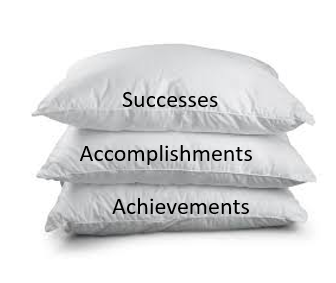 Career paths aren’t linear. There are twists and turns, detours and new routes, and they can become entangled. To avoid being mired down along the way in the entanglements, we require professional supports. You can be certain that navigation of your career path is less difficult when you are not alone. There are at least six types of allies and supporters who can help you navigate your career. They’ll help you succeed by reminding others of your history of successes, achievements, and accomplishments when navigating your path becomes difficult. They’ll be your cushions of excellence when you’re on the verge of falling. Who are typical allies and supporters? They are your former or current mentors, professional skills-building coaches, fellow alumni, professional networkers, colleagues, and former/current superiors. They may even be former subordinates who admire your work. However, the only way that they can help is if you routinely advise each of them of your career progress and achievements. Don’t be shy. Armed with that information, they each become your greatest cheerleaders -- your cushions of excellence. A cushion of excellence is any member of your network who is willing to enthusiastically share the knowledge that they have about your value. They represent you. They are your cheerleaders when you aren’t present. When your career path becomes a little messy -- as career paths will -- members of your cushions of excellence will help others consider the current difficulties to be an anomaly of your performance and not indicative of your capability as a professional. They will remind others of your history. The key is to stay in touch and self-market to help them understand and appreciate your ongoing value to your profession. Maintaining your cushions of excellence can be one of the best career decisions you'll ever make. They may very well be your guides to your next opportunities. Portions of this article are excerpts from my book “Lead or Someone Else Will: A Coach’s Guide to Leadership”. It can be found on Amazon.com. Would you like more information about maintaining a supportive network? How about a brief, confidential, no-judgement discussion of your current situation? Contact my offices at (336) 999-4533 or email me at DonnaColes.Coach@gmail.com and we’ll schedule a time to discuss your leadership dilemma and identify some options that will help. Or, Click the following link to schedule your discussion with me. https://app.acuityscheduling.com/schedule.php?owner=18102228 Until then… 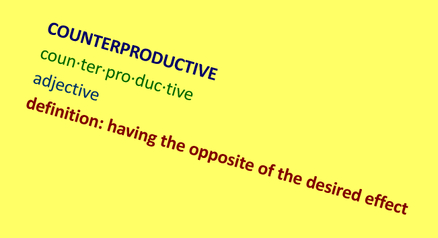 When it comes to your path to leadership success, do you ever stand in your own way? Are you aware of your counterproductive habits that affect your progress? Did you know that your counterproductive habits, the ones you don’t recognize -- because they are grounded in your intent to do the right thing -- could be major culprits in your lack of satisfactory success? What do I mean? Here are some examples of counterproductive leadership habits:
Periodically, you may want to ask people you trust about “the times your actions seemed counterproductive”. However, it takes courage to hear what others tell us about the effect of our bad habits. It takes humility to mindfully confront those habits and commit to change. Being mindful of our effect on the people around us demands that we construct responsive leadership styles that demonstrate agility as people and environments change. We learn to manage according to the need, not our needs. When we take a mindful approach to monitoring our impacts on people and processes, we leave little to chance. In support of our growth, we develop and nurture our networks of people who tell us of our counterproductive habits – no matter how painful it is to hear. Your counterproductive habits reflect your current levels of development, your personal style, and your core values and intentions. It’s every leader’s responsibility to deal with aspects of themselves that keep them from being an effective leader. Here are some recommendations to add to your process of becoming an even more effective leader.
I say systematically, because there are at least 25 leadership competencies that can be the foundation of your leadership growth. They can be found in my book. Portions of this article are excerpts from my book “Lead or Someone Else Will: A Coach’s Guide to Leadership”. It can be found on Amazon.com. Would you like more information about this topic? Or how about a brief, confidential, no-judgement discussion of your current situation? Contact my offices at (336) 999-4533 or email me at DonnaColes.Coach@gmail.com and we’ll schedule a time to discuss your leadership dilemma and identify some options that will help. Or, Click the following link to schedule your discussion with me. https://app.acuityscheduling.com/schedule.php?owner=18102228 Until then…  Are you in the midst of organizational change? Of course, most of us are. It seems that organizations are constantly working to create consumer interest and meet customer demands. Effective management of organizational change requires good leadership communications and ongoing employee awareness strategies. If you are preparing to launch or improve your employee awareness campaign, here are some suggestions to beef up your communications. Some time-tested, perhaps some new, they are offered as a reminder of the importance of employee engagement and the need for multiple channels of leadership communication to maintain morale during change initiatives.
Create your communication campaign with focuses on enhancing employee awareness, building employee motivation through knowledge, emphasizing new terminology, and supporting novel processes. Your campaign should identify how the initiative will solve a problem, affect functions, and help the organization and many (but not all) of its stakeholders meet long-term goals and self-sustain. In preparation for your communication campaign, develop engaging and informative messages and deliver them through a variety of communication genres. Don’t try to “sugar-coat” the negative impacts of a proposed change. You’ll seem disingenuous. Do you have an additional recommendation that you found effective in launching a change initiative? Why not share it in the comments below? What worked for you? Portions of this article are excerpts from my book “Lead or Someone Else Will: A Coach’s Guide to Leadership”. It can be found on Amazon.com. Would you like more information about communication strategies? How about a brief, confidential, no-judgement discussion of your current situation? Contact my offices at (336) 999-4533 or email me at DonnaColes.Coach@gmail.com and we’ll schedule a time to discuss your leadership dilemma and identify some options that will help. Or, Click the following link to schedule your discussion with me. https://app.acuityscheduling.com/schedule.php?owner=18102228 Until then… Click the link below for details about my book.
Click Here! Donna mixed thirty essential leadership principles with practical tools and step-by-step methods to create “Lead or Someone Else Will.” With its easy-to-read format and thought-provoking questions for you to consider, this book is designed to help shape your leadership brand and legacy. You will learn from and enjoy reading the brief, yet pointed discussions of leadership that the author has laced with entertaining, yet thought-provoking stories from the author’s leadership coaching practice. It’s not a tell-all, but a teach all – giving you all that the author has learned about leadership as an administrator, coach, and consultant. This book was a joy to write, and the author hopes that you enjoy reading “Lead or Someone Else Will: A Coach’s Guide to Leadership.” If you’re interested in contributing, you can help shape Donna’s next leadership book by sending your recommendations to DonnaColes.Coach@gmail.com. Living a balanced life means that you've found your personal methods to consistently be your healthiest in all areas of your life.
Living a balanced life also means that you've found your personal methods that allow you to be at peace with your world around you. Even as you live a lifestyle that includes an important leadership role, it's vital to your health to focus on your whole life -- not just your career and work. Fully managing your care in all life areas will make your effectiveness, in your leadership role, that much stronger. Give my offices a call at (336) 999-4533 to schedule a discussion with me. We'll talk about your challenges and options that can help. Until then...  To manage through a change process, it’s important for leaders to have well thought-out and coordinated communications. Without mindful planning across the organization, communication in support of an anticipated change may be difficult to navigate for the leaders and the employee groups. Lack of clarity and direction from leadership may cause initiatives and employee trust to fall flat. Even with the best leadership communication through change, understand that some recipients of your communication may not agree that a problem worth resolving exists. They may be your outliers who must be convinced that a problem exists before they will agree to participate in the solution. Provide the data and the bottom line including the necessity for everyone involved to participate fully in the initiative. Have two-way communication with members of your organization -- avoid an abundance of one-way communication. With one-way communication, like messages in a bottle, you'll have little timely awareness of your impact. Thanks for reading my blogs. While you’re here, schedule a no-cost telephone Consultation to discuss your leadership development needs. Click here to schedule your confidential appointment.  Distrust of your ability to lead your employees creates an environment that encourages de-facto leaders to emerge from your employee group. Employees are often grateful for the emergence of the de-facto leader. That employee can have the attention of your employees and a level of power that overtly or covertly usurps (or supports) your capacity to lead. A de-facto leader may have information that leadership needs to make change processes truly successful. Unknown to leadership, the de facto leaders provided employment-sustaining supports to coworkers and in effect kept the organization operating smoothly. When leadership was made aware of the mathematical deficits within the shop, short-term and focused tutoring was made available to employees who wanted the supports. Enhance your power to lead your employees. Ask questions, stay in touch with your employees. Leave no niche available for the de-facto leader to diminish or take away the strength of your leadership. When a de-facto leader begins to emerge from the employee group, recognize the employee’s desire to impact the workgroup by enlisting the employee’s support. Support the employee’s desire to make an impact. Lead, or your de-facto leader will. Thanks for reading my blogs. While you’re here, schedule a no-cost telephone Consultation to discuss your leadership development needs. Click here to schedule your confidential appointment. 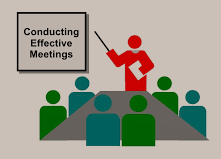 The leader’s role in meeting management, is not for the faint at heart, particularly in times of change. Meeting management requires the leader to maintain a focus on the task at hand as well as focus on the interpersonal dynamics of the group. Focusing on the task requires the leader to mindfully introduce new information and new initiatives, lead through the process of closure and abandonment of current initiatives, guide discussions, clarify issues, allay fears, and suggest the likely consequences of lack of successful compliance. When in a leadership position, to take charge means that in a timely fashion, you will lead group discussions out of the past and encourage the group to move forward, into the future. Leading the way, you’ll share your vision for the future, brainstorm the possibilities, and communicate your commitments to excellence. You’ll want to maintain focus on the action plan and accountability, and how you’ll accomplish the goal. Take care to disallow the discussion to get sidetracked to the past – where it’s most comfortable. Thanks for reading my blogs. While you’re here, schedule a no-cost telephone Consultation to discuss your leadership development needs. Click here to schedule your confidential appointment.  The use of disciplined decision-making means that prior to formulating and acting upon your conclusions, you’ll identify the information required to make a rational and informed choice. You’ll clarify what’s needed and seek out sources of information. You’ll move beyond your uncomplimentary perceptions of others and strive to effectively work with each information source – to purposefully obtain the data that you require. Personalities won’t matter. The potentiality of personality clashes won’t deter you from being a disciplined decision maker. And without fail, you’ll work to avoid clashes. And you’ll retrieve the information that you need. Once you’re ready to make your decision, you’ll explore the possibilities while avoiding confirmation bias – the type of thinking that allows you to selectively gather information that confirms your early conclusions. On the other hand, flexible thinking allows you to accept information that disconfirms your early thought. Of course, when we look at decision-making processes, we know that each situation requires its own depth and breadth of consideration to formulate a suitable response. The success of your choice will undoubtedly be measured by the positive shift within the organization. Thanks for reading my blogs. While you’re here, schedule a no-cost telephone Consultation to discuss your leadership development needs. Click here to schedule your confidential appointment. 6/3/2019 0 Comments Re-Energize Your Career Question: How do we re-energize our career development strategies when we’ve lost momentum? Answers: We re-clarify our career legacy dream. We refocus our career vision when it becomes murky. We re-commit to our achievable goals. We problem-solve and target our efforts to better manage our day-to-day challenges. We once again set our energies in motion with renewed determination to accomplish our objectives. And we re-engage our life purpose. It’s important to accept that losing momentum from time-to-time is natural – a normal occurrence when “life” happens to our best intentions. And, then, we re-engage, once again, and move forward. While accepting a leadership position certainly means accepting responsibility for helping to determine your organization’s direction and speed as it navigates the waters toward its mission and vision; you must also keep in mind that you have a responsibility to “captain your ship”. As a result, you cannot allow your “vessel” to go adrift. Neither can you allow your “vessel” to become an empty one. Let your self-motivation take you to excellence. Thanks for reading my blogs. While you’re here, schedule a no-cost telephone Consultation to discuss your leadership development needs. Click here to schedule your confidential appointment. |
|||||||
To schedule a private and confidential Coaching appointment,
Click Here for the appointment scheduler
Coaching appointments are available by phone or secure video.
© 2018 TotalExecutiveCoach.com All Rights Reserved
Click Here for the appointment scheduler
Coaching appointments are available by phone or secure video.
© 2018 TotalExecutiveCoach.com All Rights Reserved
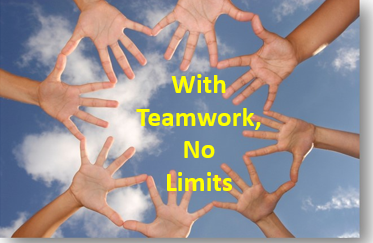

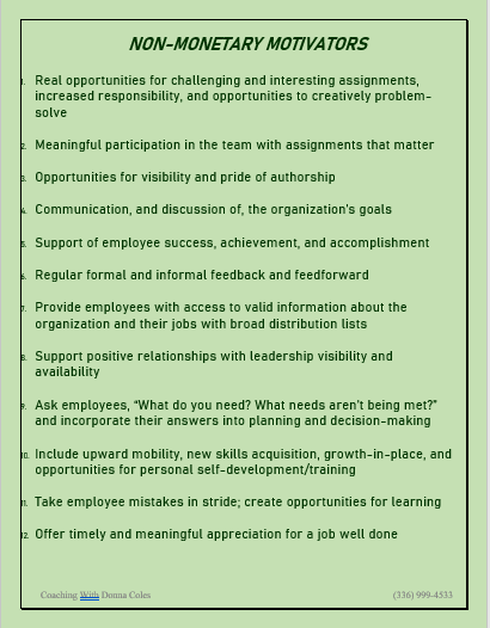
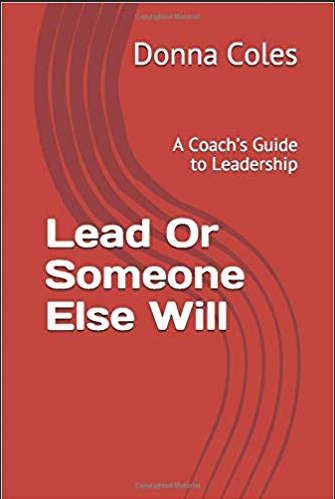

 RSS Feed
RSS Feed
